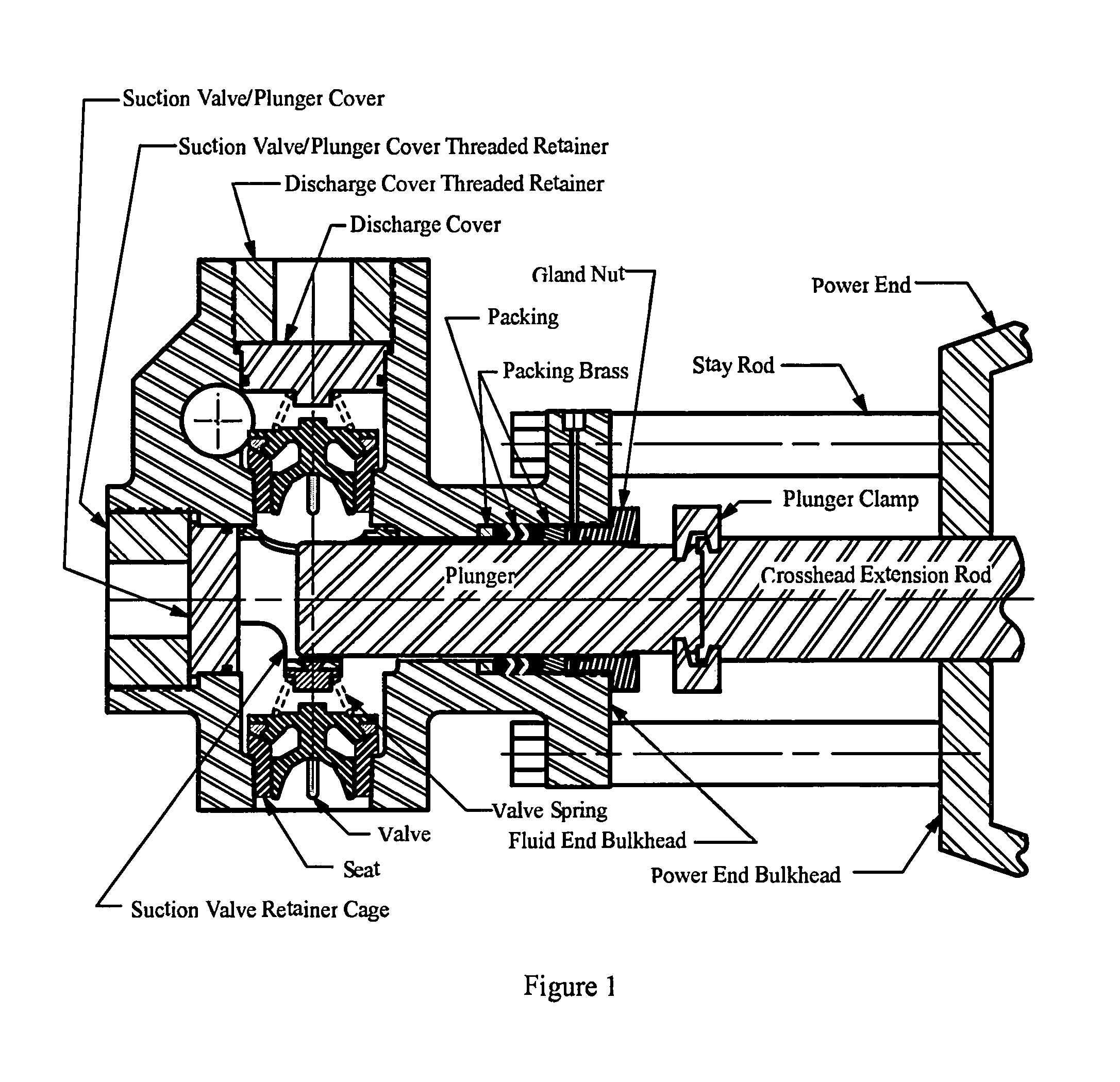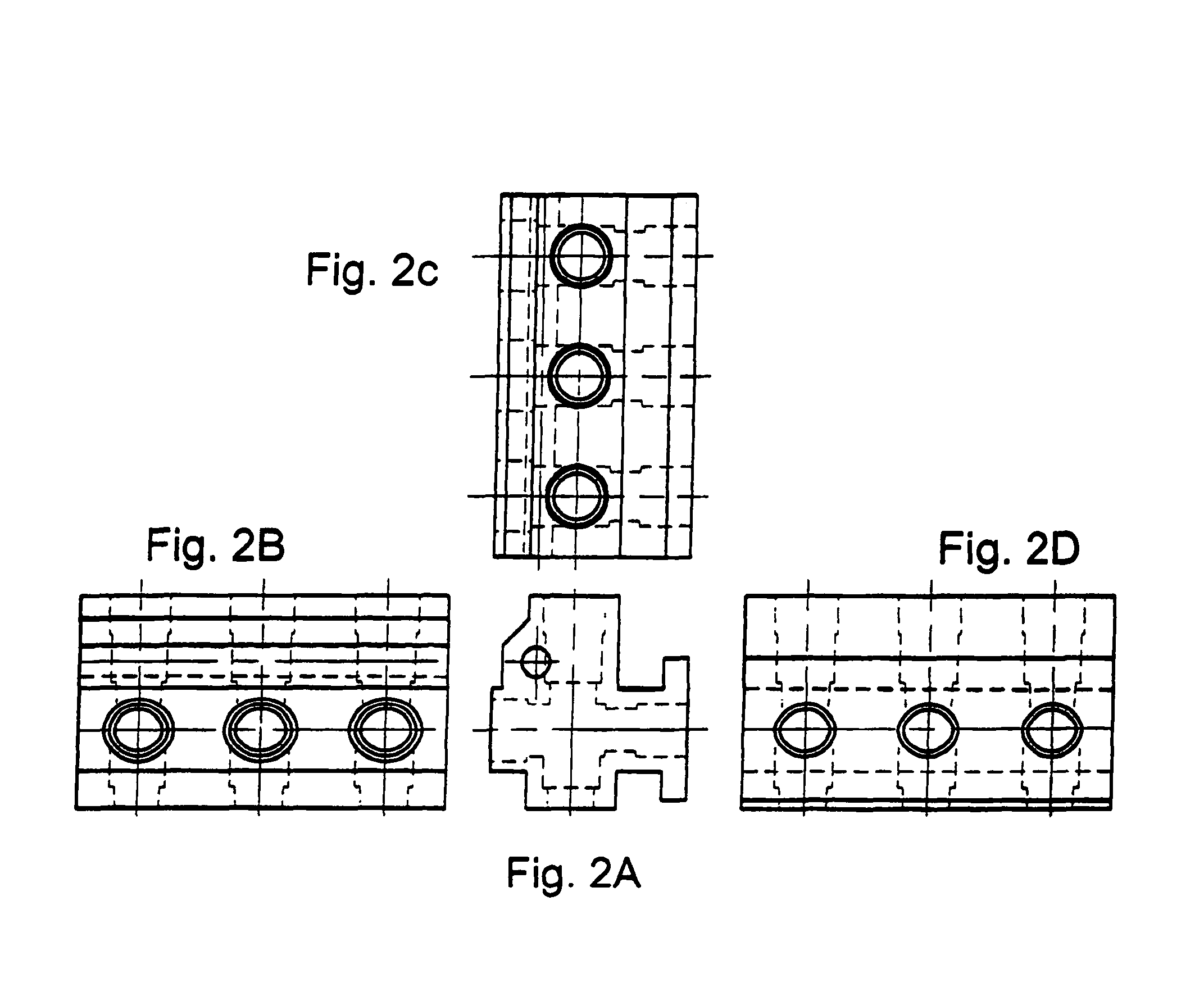Low turbulence valve
a low-turbulence valve and valve seat technology, applied in the direction of machines/engines, liquid fuel engines, positive-displacement liquid engines, etc., can solve the problems of premature valve failure, high pressure and repetitive impact load on the valve body and valve seat, and the sealing surface of the valve is subject to exceptionally harsh conditions, so as to improve the flow and prevent turbulence
- Summary
- Abstract
- Description
- Claims
- Application Information
AI Technical Summary
Benefits of technology
Problems solved by technology
Method used
Image
Examples
Embodiment Construction
[0068]FIG. 14A schematically illustrates a cross-section of a right-angular plunger pump fluid end housing 12, with a fluid chamber 1, having internally guided suction and discharge valves of the present inventions. Fluid Chamber 1 has discharge fluid chamber 2 and a suction chamber 3, wherein discharge fluid chamber 2 contains a discharge seat 250, discharge valve and seal assembly 230, discharge cover 211, male stem guide 271, and a discharge spring 241. Suction fluid chamber 3 contains a suction seat 350, suction valve and seal assembly 330, suction valve spring retainer 311, suction male stem guide 371, and a suction spring 341. Fluid chamber 1 also contains a plunger 14. Discharge fluid chamber 2 is connected to adjacent discharge fluid chambers by a discharge manifold 13.
[0069]FIG. 14B schematically illustrates an embodiment of the present invention. Discharge valve assembly 210 is positioned in the discharge fluid chamber 2, which is one of multiple chambers inside fluid end ...
PUM
 Login to View More
Login to View More Abstract
Description
Claims
Application Information
 Login to View More
Login to View More - R&D
- Intellectual Property
- Life Sciences
- Materials
- Tech Scout
- Unparalleled Data Quality
- Higher Quality Content
- 60% Fewer Hallucinations
Browse by: Latest US Patents, China's latest patents, Technical Efficacy Thesaurus, Application Domain, Technology Topic, Popular Technical Reports.
© 2025 PatSnap. All rights reserved.Legal|Privacy policy|Modern Slavery Act Transparency Statement|Sitemap|About US| Contact US: help@patsnap.com



